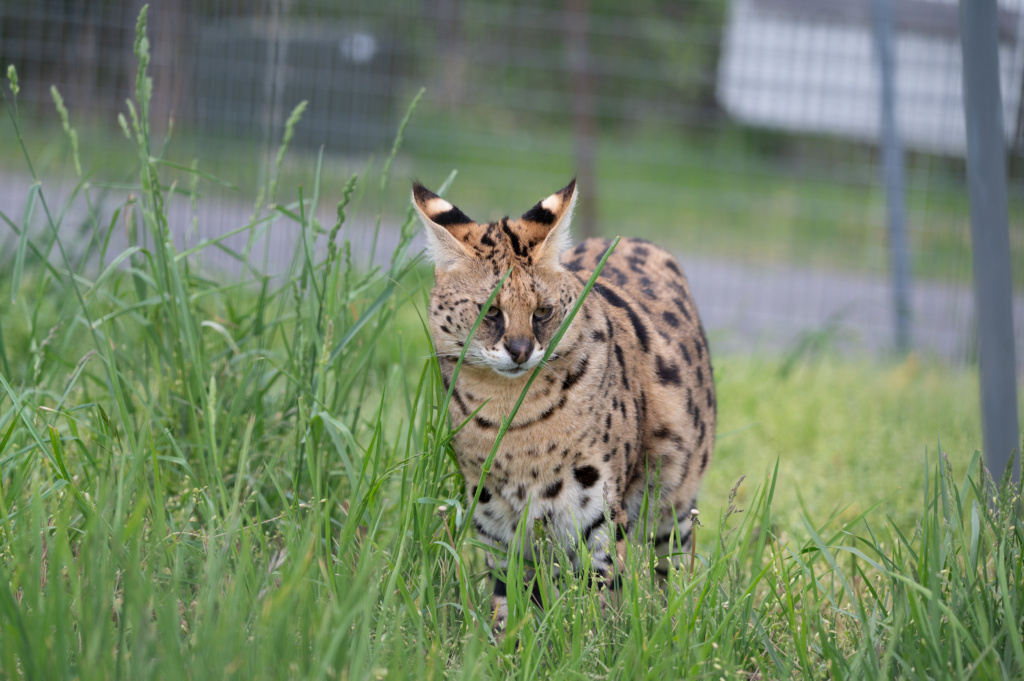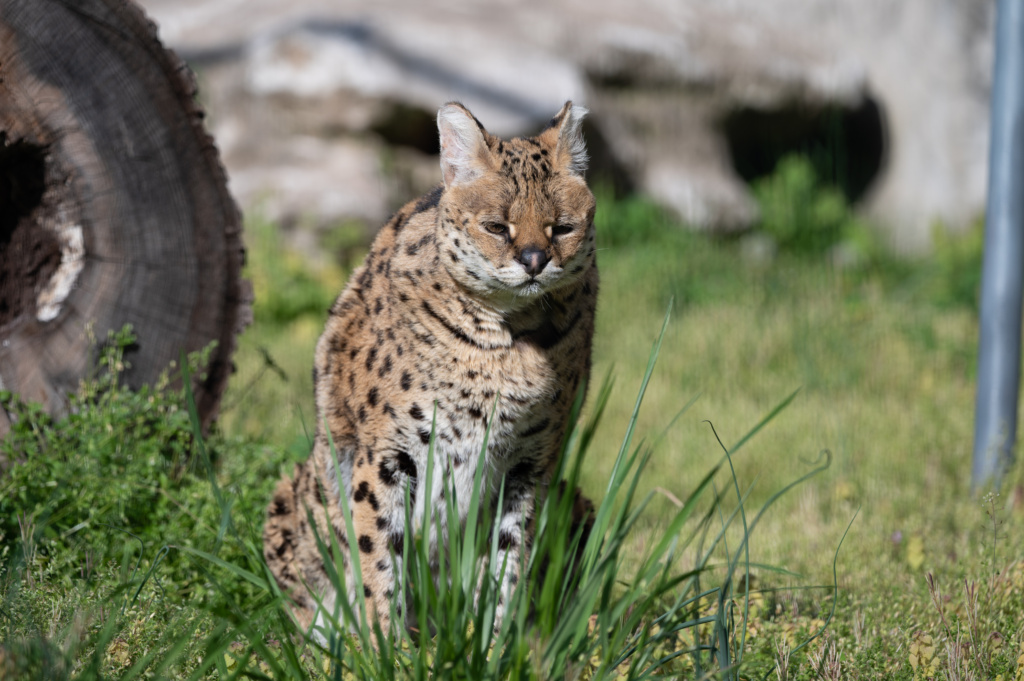
The savanna has many dangerous apex predators, including lions, leopards, cheetahs, hyenas, crocodiles, wild dogs, and more. Traveling in large groups and weighing in at 400 pounds with a jaw strength of 650 pounds per square inch, pop culture commonly refers to lions as the “King of the Jungle.” Contrary to popular belief, big cats (lions, tigers, leopards, jaguars) are only successful hunters 20-25% of the time. Standing out in the wild cat family is the African Serval, which has a hunting success rate of 50%!
For big cats, the cost of their size lowers their success rate at hunting. They require much more energy to sustain their massive bodies and exert themselves to take down prey. The success of their hunt is determined by the ability to get close enough to strike, group communication, and coordination. Because they are so large, it is more difficult for them to get as close to their prey without being seen.
African Servals are remarkable hunters, surpassing most other wild cat species. These animals have specific physical features that allow them to be more agile and successful at hunting. One of these features is their long legs compared to the rest of their body. Their legs allow them to leap vertically into the air and catch birds mid-flight up to 9 feet off the ground. Their small size also allows them to minimize the noise they make during their stalk, avoiding the crunch of leaves and sticks breaking under the weight of their body.

Another distinguishing feature that makes Servals successful hunters is their large ears. Servals need not rely only on their eyesight while stalking in the grass but also employ their acute sense of hearing. This allows them to detect subtle sounds, such as the slight movement and change in direction of small animals rustling in the underbrush. They also have great camouflage, blending into grassland habitats with their spotted coat.
The African Serval’s impressive 50% success rate in hunting showcases the unique adaptations of this medium-sized wild cat. While larger big cats face challenges related to size, energy expenditure, and social dynamics, the serval’s success lies in its agility, specialized hunting techniques, and adaptation to specific environments. Understanding these physical features and natural behaviors plays a key role in how Turpentine Creek designs habitats. Each habitat must meet the physical needs of the animals, including heat, cooling, platforms, and other features to replicate their natural environment best and give the animals the freedom to behave as they would in the wild.
